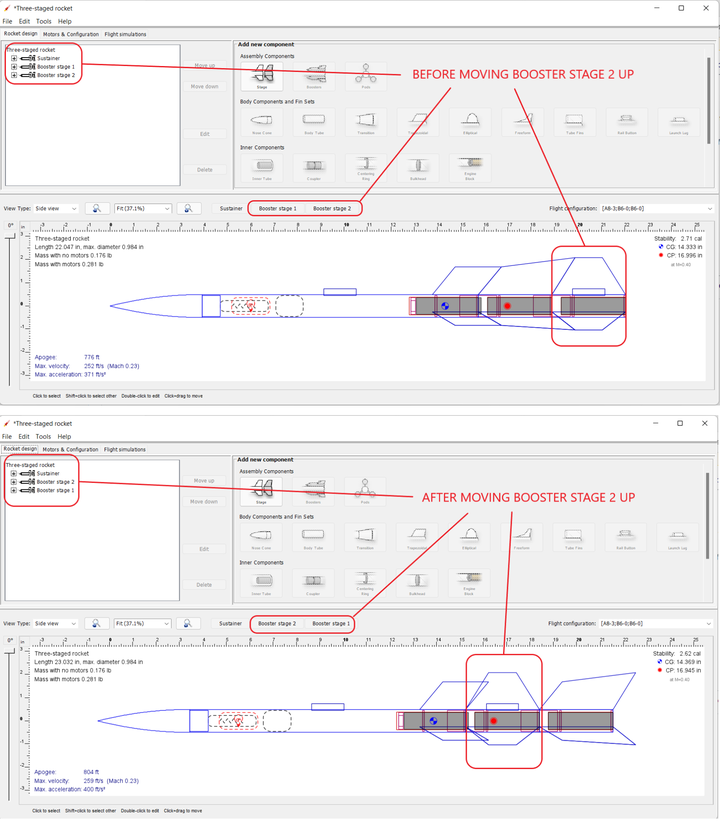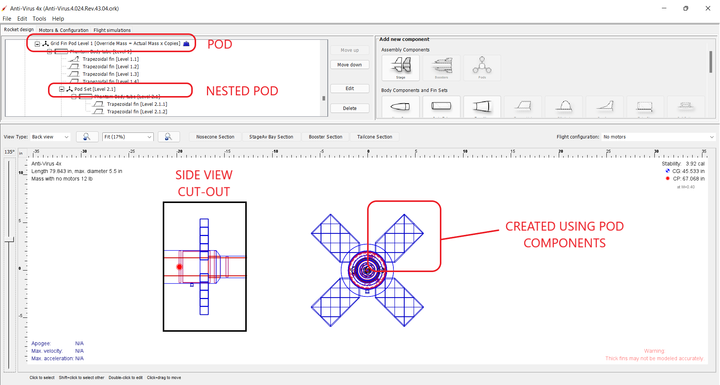Assembly Components Basics
| Component | Function |
|---|---|
A rocket with a single motor is just that, a rocket. But, when you add another motor below the first, the part of the model containing the first motor is called a “sustainer” and the lower portion containing the second motor is called a “booster.” In version 15.03, these were denoted as “Stage 1" and Stage 2,” and these names could not be changed. Now OpenRocket not only allows you to rename stages, you can actually cut (or copy) and paste stages, or move them up and down. And, as you do, the names on the stage buttons change as well. You can even choose to turn stages on and off, making a stage visible or invisible. In the example below, the stages of a three-stage rocket have been changed to "Sustainer," "Booster stage 2," and "Booster stage 3." |
|
And, that is just a small sample of what you can now do with OpenRocket. |
|
<<INSERTION POINT>> |
|
Pod components are wonderful crazy things that you can’t really see, but you can attach other components to. In the example below, phantom body tubes are attached to a pod and then fins are attached to the phantom body tube, then nest a another finned pod, and duplicate that (changing the angle), and this is what you can get. |
|
With a little thought, experimentation, and planning, you can do almost anything using pods. The down side is that very unique designs may not simulate correctly. When using pods, always independently verify the stability of your design. |





